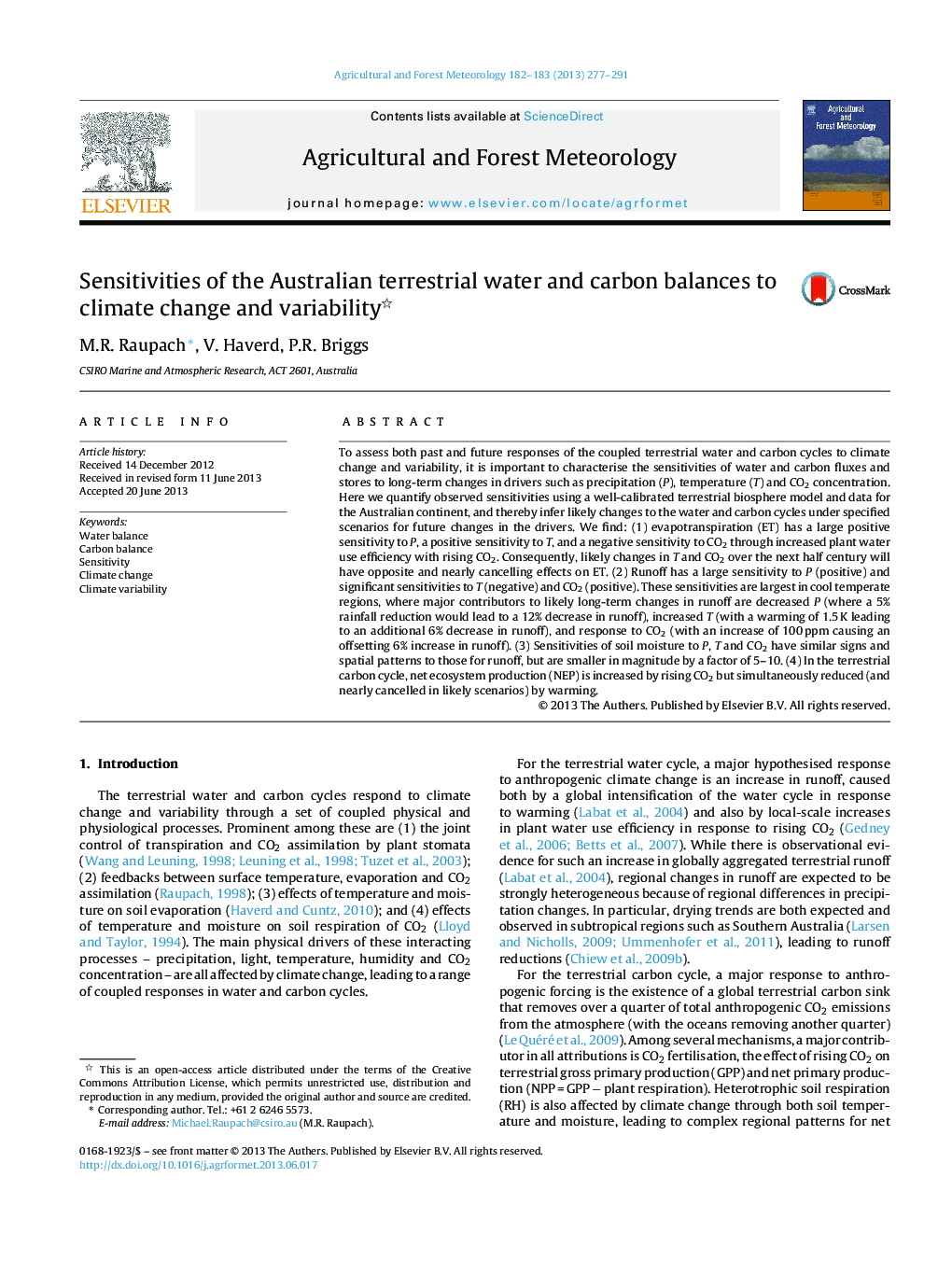| کد مقاله | کد نشریه | سال انتشار | مقاله انگلیسی | نسخه تمام متن |
|---|---|---|---|---|
| 6537762 | 158343 | 2013 | 15 صفحه PDF | دانلود رایگان |
عنوان انگلیسی مقاله ISI
Sensitivities of the Australian terrestrial water and carbon balances to climate change and variability
ترجمه فارسی عنوان
حساسیت آب و کربن استرالیا نسبت به تغییرات آب و هوایی و تنوع کربن
دانلود مقاله + سفارش ترجمه
دانلود مقاله ISI انگلیسی
رایگان برای ایرانیان
کلمات کلیدی
تعادل آب تعادل کربن، حساسیت، تغییر آب و هوا، تغییرات اقلیمی،
موضوعات مرتبط
مهندسی و علوم پایه
علوم زمین و سیارات
علم هواشناسی
چکیده انگلیسی
To assess both past and future responses of the coupled terrestrial water and carbon cycles to climate change and variability, it is important to characterise the sensitivities of water and carbon fluxes and stores to long-term changes in drivers such as precipitation (P), temperature (T) and CO2 concentration. Here we quantify observed sensitivities using a well-calibrated terrestrial biosphere model and data for the Australian continent, and thereby infer likely changes to the water and carbon cycles under specified scenarios for future changes in the drivers. We find: (1) evapotranspiration (ET) has a large positive sensitivity to P, a positive sensitivity to T, and a negative sensitivity to CO2 through increased plant water use efficiency with rising CO2. Consequently, likely changes in T and CO2 over the next half century will have opposite and nearly cancelling effects on ET. (2) Runoff has a large sensitivity to P (positive) and significant sensitivities to T (negative) and CO2 (positive). These sensitivities are largest in cool temperate regions, where major contributors to likely long-term changes in runoff are decreased P (where a 5% rainfall reduction would lead to a 12% decrease in runoff), increased T (with a warming of 1.5Â K leading to an additional 6% decrease in runoff), and response to CO2 (with an increase of 100Â ppm causing an offsetting 6% increase in runoff). (3) Sensitivities of soil moisture to P, T and CO2 have similar signs and spatial patterns to those for runoff, but are smaller in magnitude by a factor of 5-10. (4) In the terrestrial carbon cycle, net ecosystem production (NEP) is increased by rising CO2 but simultaneously reduced (and nearly cancelled in likely scenarios) by warming.
ناشر
Database: Elsevier - ScienceDirect (ساینس دایرکت)
Journal: Agricultural and Forest Meteorology - Volumes 182â183, 15 December 2013, Pages 277-291
Journal: Agricultural and Forest Meteorology - Volumes 182â183, 15 December 2013, Pages 277-291
نویسندگان
M.R. Raupach, V. Haverd, P.R. Briggs,
